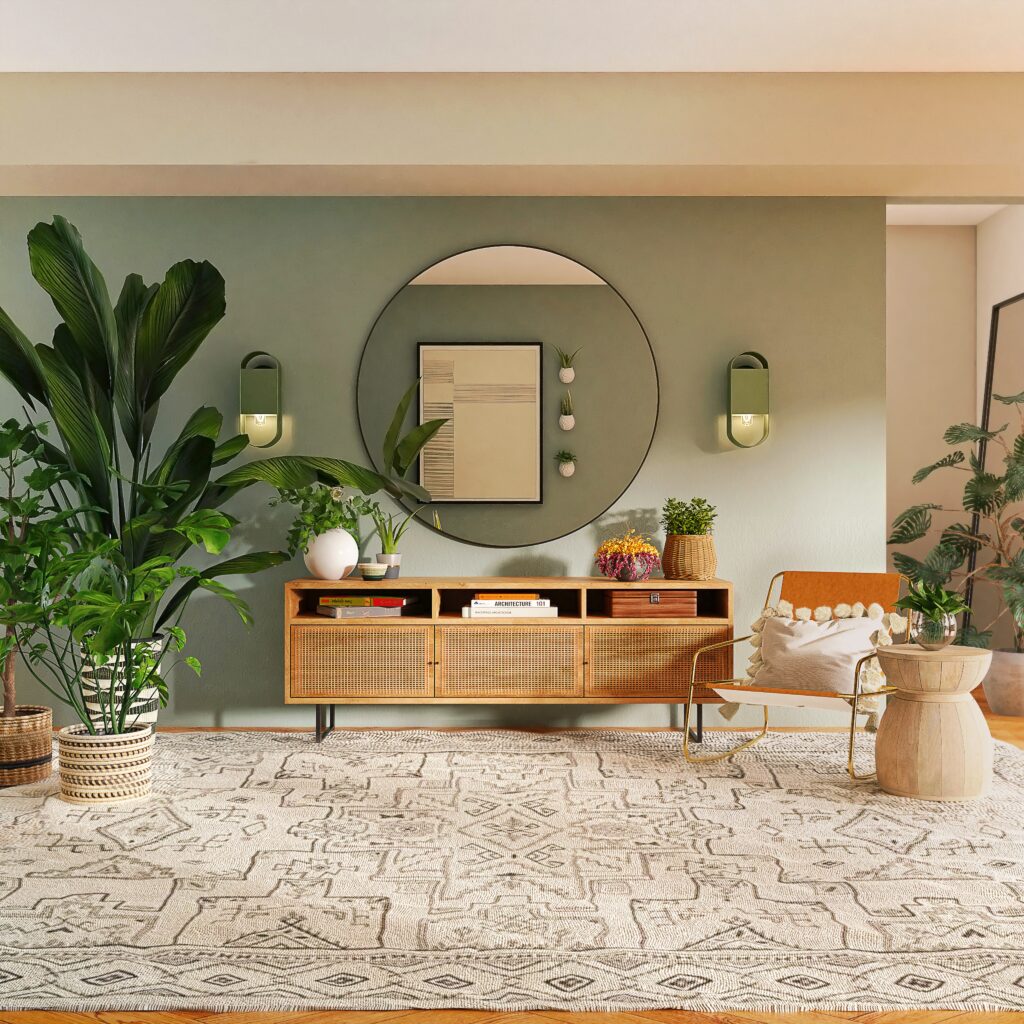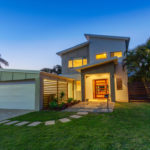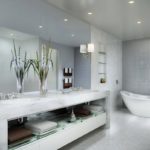Biophilic design is all the rage these days. More and more people are looking to nature to help them create a healthier and more sustainable lifestyle.
Biophilia in architecture is a worldwide movement, with even an award-winning documentary feature called Biophilic Design: The Architecture of Life recognising it.
But what about biophilic design for your home? Can you really incorporate nature into your interiors and exteriors and does it add to the value of your property? The answer is yes!
What is biophilic design?
Biophilic design is a term used in architecture, interior design, and landscape architecture that refers to the incorporation of natural elements into the built environment. Biophilic design has been shown to improve occupant well-being and cognitive function, and may also help to reduce stress levels. Biophilic design can be applied both indoors and outdoors, and may include features such as plants, water features, natural light, and outdoor views.
Key elements of biophilic design to consider for your home are:
- Bringing nature indoors
- Using natural materials in your home
- Bringing a sense of the outdoors inside
- Choosing biophilic colours for your home
- Enhancing your view of nature
Bringing nature indoors
Indoor plants are a great way to bring nature indoors in terms of biophilic interior design. Indoor plants help purify the air, improve mental health, and boost productivity. Snake plants, spider plants, and peace lilies are some of the best indoor plants for purifying the air. Aloe vera is a great plant for improving mental health due to its calming and therapeutic properties. Bamboo is known as the “plant of happiness” because it is said to boost productivity.
If you don’t have a green thumb, you can still bring nature indoors with biophilic design by incorporating natural materials into your home’s design.
Using natural materials in your home
One of the best ways to incorporate nature into your home is by using natural materials. For example, instead of using synthetic carpet, opt for a wool or bamboo rug. These materials are not only more sustainable, but they also help to purify the air and reduce allergens.
Using stone and wood is another way to add biophilic design elements to your home. Popular inclusions such as using stone for built interiors such as flooring and walls or wood for walls, storage, furniture or décor can help to create a more relaxing and inviting environment.

Image by Spacejoy on Unsplash
Bringing a sense of the outdoors inside
Biophilic design is not only about bringing nature indoors. It is also about creating a connection between the indoors and outdoors. Incorporating large windows and doors into your home’s design is a great way to do this. You can also create an outdoor living space that can be used year-round by enclosing it with glass or screens.
If you have the space, adding a skylight is another great way to bring the outdoors inside. Skylights help to improve daylighting and ventilation while also providing a connection to the outdoors.
Choosing biophilic colours for your home
Biophilic colours are colours that connect people with nature. They can be used in both interior and exterior design, and they have been shown to improve moods, increase productivity, and promote a sense of well-being. Some common biophilic colours include green, blue, and brown.
Enhancing your view of nature
Australia is home to some amazing landscapes, which can be enjoyed from the comfort of your own home. There are few things more relaxing than sitting by a window and looking out at a beautiful view.
While biophilic design is becoming more and more popular all over the world, Australia has been ahead of the curve for quite some time now.
As many Australian home owners are seeing when they are selling property already, biophilic design can make your home more desirable to potential buyers. So if you’re looking to increase the value of your home, consider adding some biophilic elements.
If you are looking to ‘live smarter’ check out our article on sustainable features buyers are looking for.
Disclaimer: The opinions posted within this blog are those of the writer and do not necessarily reflect the views of Better Homes and Gardens® Real Estate, others employed by Better Homes and Gardens® Real Estate or the organisations with which the network is affiliated. The author takes full responsibility for his opinions and does not hold Better Homes and Gardens® Real Estate or any third party responsible for anything in the posted content. The author freely admits that his views may not be the same as those of his colleagues, or third parties associated with the Better Homes and Gardens® Real Estate network.



